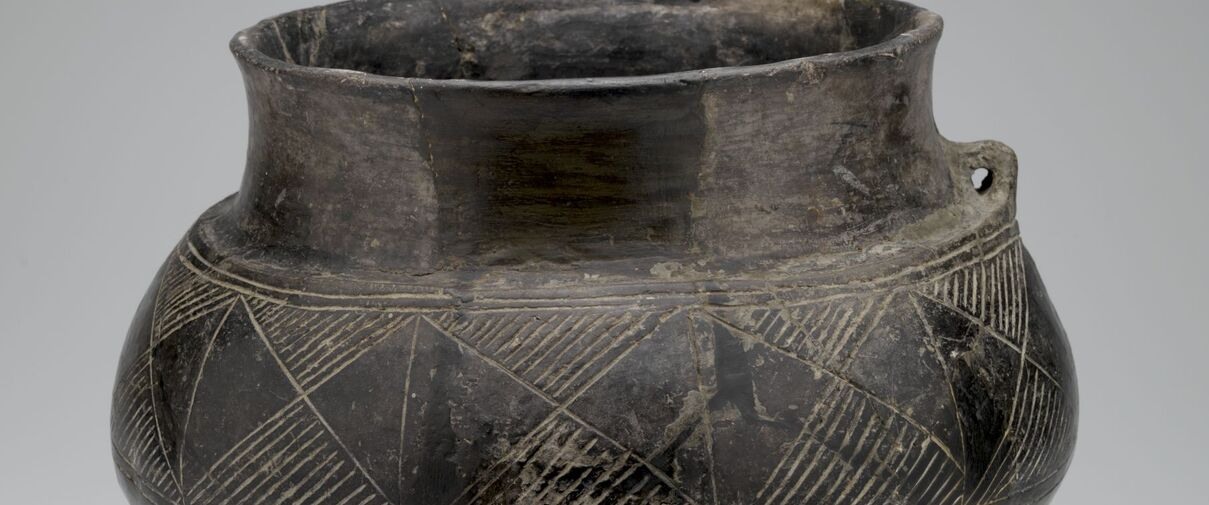ruinen-wommels pot
The small ear on this pot served to hang it on to something. Note the geometrical decorations on the black earthenware, which varied with the geographical origin of the community that made it.
This type of pottery is named after the places where it was found: the villages of Ruinen in the province of Drenthe and Wommels in Friesland. It is assumed that some of Friesland’s first inhabitants were migrants from the province of Drenthe.
